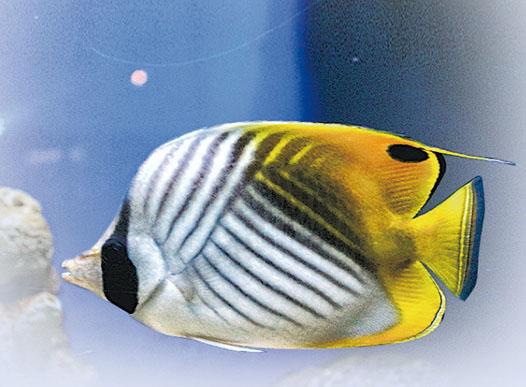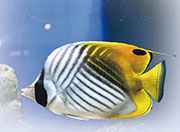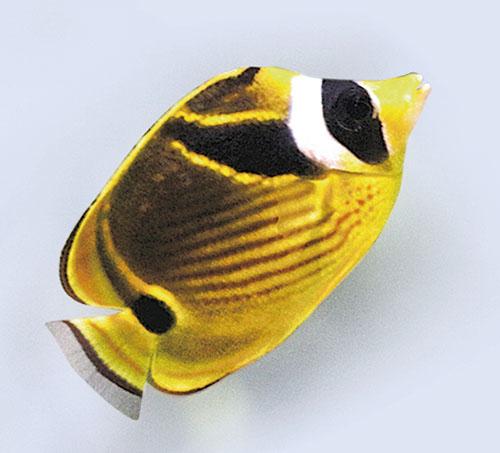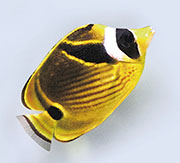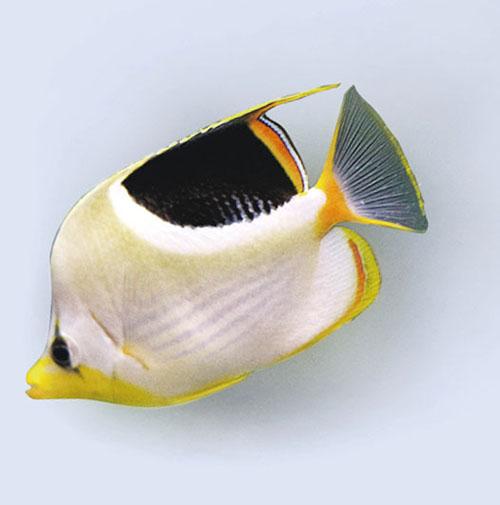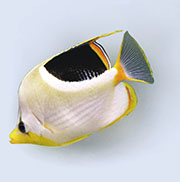Animal:Head or tail? Ask the butterflyfish
【明報專訊】Is that the head or the tail? You may be confused because it may be difficult to tell the head from the tail of a butterflyfish(蝴蝶魚). It doesn't help if you toss a coin! This is the common trick butterflyfish play on their predators. This is one of the amazing ways animals configure their body features to creatively adapt to nature's many challenges!
Colourful discs
Butterflyfish have a beautifully streamlined body like a disc. Even their dorsal, pelvic and anal fins (背鰭、腹鰭及臀鰭) are so positioned that the whole body becomes a flat, full disc. Their body is brightly coloured, often in yellow or white with bold dark stripes. There is usually a peculiar dark stripe across their eyes, which is a brilliant disguise for where their head really is. To complete the trick, the butterflyfish may have a false eyespot near their tail, usually in matching colour with the eye band! These smart features are an anti-predator adaptation. Especially for predators that attack by biting fins, the false eyespot mimics the head and throws the predator into confusion.
Coral dwellers
Butterflyfish are primarily tropical fish and consist of over 130 species. They are mostly found in the Indo and West Pacific, from Australia to Taiwan. They like to hang out in shallow waters near coral reefs, but some can be deepwater creatures dwelling at a depth of up to 200 m.
Butterflyfish are daytime feeders and use their vision to find prey. Their food can be found in the coral reefs, such as zooplankton (浮游動物), coral polyps (珊瑚蟲) and other small invertebrates(無脊椎動物). Their long and narrow snout let them pick at the coral polyps and small gaps between hard corals. Some of them are herbivores, feeding on algae and seagrass. Butterflyfish may scrape the surface of live corals to graze on the attached invertebrates, algae covering reef flats or mucus coming from the corals.
Interdependent ecosystem
The butterflyfish feeding on algae on coral surfaces are especially important for the well-being of the corals. It is like mowing the lawn regularly, keeping the algae nicely cropped to a thin mat 1 to 2 mm thick.
Since butterflyfish are dependent on coral reefs as their habitat and food source, the loss of corals caused by fishing, climate change and other human activities are immediate threats to them too. A balanced coral ecosystem is therefore life-conserving for many marine creatures, among them the brilliant butterflyfish.
(Text and photos : Ocean Park Hong Kong)
[Smarties' Power English 第307期]

